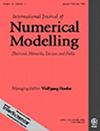A Lightweight Network Based on Multi-Scale Convolutional Neural Network and Gated Transformer for EEG Emotion Classification
Abstract
To address the complementary advantages of local feature extraction in EEG signals and global dependency modeling while overcoming the high computational demands of conventional Transformers, this study proposes an innovative Multi-scale Convolutional and Gated Transformer Fusion Model (MC-GTF). The model leverages the parallel processing capability of multi-scale convolutional networks for efficient local feature extraction, combined with a gated Transformer mechanism that effectively captures long-range dependencies with reduced computational complexity. Using power spectral density (PSD) features from 11-channel DEAP dataset EEG recordings as input, our approach strategically groups the electrodes into three functional brain regions for parallel spatial feature processing. The architecture employs a sequential design where multi-scale convolutional layers perform local inter-channel feature extraction, followed by gated Transformer layers that learn global inter-region relationships. This hybrid design achieves competitive performance while maintaining significantly lower parameter requirements than conventional approaches, offering a practical and efficient solution for real-world EEG-based emotion recognition applications. The model achieved good classification results even with less parameters, as indicated by accuracy and F1 score for cross-subject classification on the DEAP dataset. In addition, its classification efficiency was significantly improved.

 求助内容:
求助内容: 应助结果提醒方式:
应助结果提醒方式:


